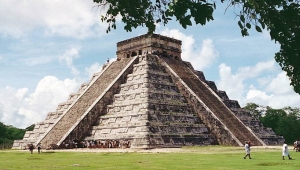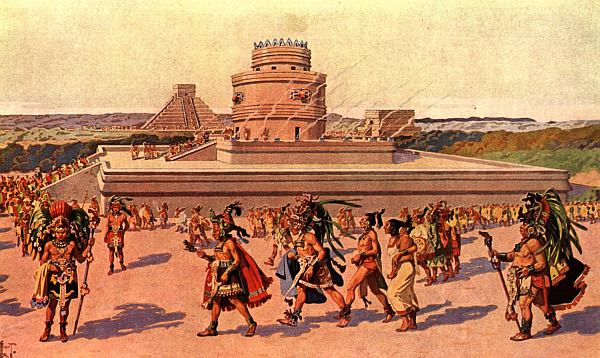Washington - A team of archaeologists investigating rainfall levels in southern Belize for a clue to the possible impact of climate change on modern society, suggests that the collapse of the Maya civilization was due to climate change.
Researchers compiled a detailed climate record that tracks 2,000 years of wet and dry weather in present-day Belize, where Maya cities developed from the year 300 to 1000.
According to an article in the latest issue of "Science" magazine, the researchers used data locked in stalagmites as well as the archeological evidence left by the Maya, to determine how the Mayans development and ultimate disintegrations paralleled a long-term wet weather pattern that shifted to drought.
Unlike the current global warming trend, which is spurred by human activities including the emission of atmosphere-heating greenhouse gases, the change in the Central American climate during the collapse of the Maya civilization was due to a massive, undulating, natural weather pattern.
This weather pattern alternately brought extreme moisture, which fostered the growth of the Maya civilization, and periods of dry weather and drought on a centuries-long scale, said the study's lead author, Douglas Kennett, an anthropologist at Penn State University.
 |
| Mayan temple in Chichenitza, Mexico |
The wet periods meant expanded agriculture and growing population as Maya centers of civilization grew, Kennett said in a telephone interview. It also reinforced the power of the kings of these centers, who claimed credit for the rains that brought prosperity and performed public blood sacrifices meant to keep the weather favorable to farming.
When the rainy period gradually changed to dry weather around the year 660, Kennett said, the kings' power and influence collapsed, and correlated closely with an increase in wars over scarce resources.
"You can imagine the Maya getting lured into this trap," he said. "The idea is that they keep the rains coming, they keep everything together, and that's great when you're in a really good period ... but when things start going badly, and the kings are doing the ceremonies and nothing's happening, then people are going to start questioning whether or not they should really be in charge."
The political collapse of the Maya kings came around the year 900, when prolonged drought undermined their authority. But Maya populations remained for another century or so, when a severe drought lasting from the years 1000 to 1100 forced Maya to leave what used to be their biggest centers of population.
Even during the Maya heyday, humans had an impact on their environment, Kennett said, mostly by farming more land, which in turn caused greater erosion. During the dry periods, the Maya responded with intensified agriculture.
When the climate in the area shifted toward drought, in a long-running pattern called the intertropical conversion zone, it exacerbated human impact on environment, Kennett said.
"There are some analogies to this in the modern context that we need to worry about" in Africa or Europe, he said.
If there are changes in climate that undermine agricultural systems in some areas, it could create widespread famine, social instability, and warfare that then draw in other populations, he said -- just as it may have happened in Maya civilization.


